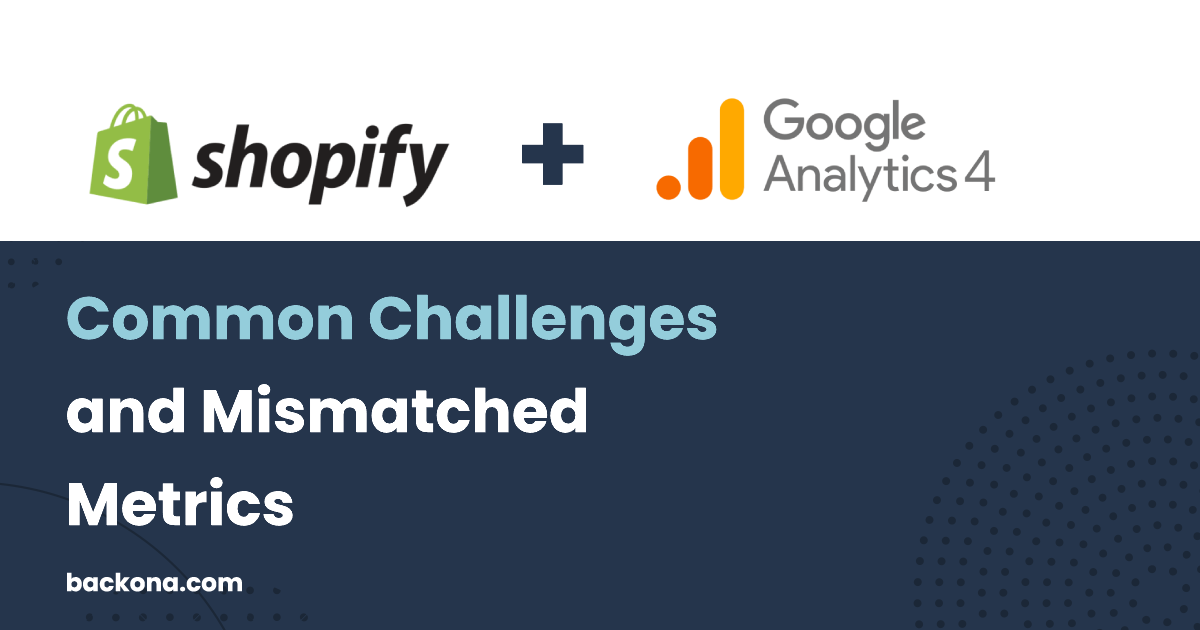The importance of e-commerce analytics can’t be overstated, especially in a digital realm where understanding your customers determines the success of your online store. As Universal Analytics becomes a thing of the past, Google Analytics 4 (GA4) emerges as a pivotal tool for insightful data. However, merging GA4 with platforms like Shopify isn’t always straightforward. In this article, we’ll delve into the challenges and provide tips on ensuring accurate data integration.
Google Analytics 4 and Shopify: Why it Matters
In the transition from Universal Analytics to GA4, online retailers are often pushed to the edge to stay ahead. But why is integrating GA4 with Shopify so essential? The answer is straightforward: to harness the fullest potential of your analytics. This optimizes understanding of customer behaviors, ensuring data-driven strategies for growth.
Pitfalls to Avoid in GA4 Implementation
- Data Discrepancies: The union of GA4 and Shopify is not without its hitches. One prime concern is the potential disparity between data from Shopify and GA4. This misalignment can arise from factors like ad blockers, server-side tracking glitches, or even plain configuration errors. A classic manifestation is the inconsistency in Order IDs.
- Tracking Code Troubles: Implementing the GA4 tracking code in Shopify is a delicate task. If mishandled, it may result in flawed data tracking. This distortion can misrepresent Purchase and Checkout funnels and muddy the analysis of specific items.
The Problem of Missing E-commerce Events
For a full spectrum of analytics, certain e-commerce events are non-negotiable. Events such as ‘view_items,’ ‘add_to_cart,’ and ‘view_item_list’ are integral to a comprehensive understanding. Unfortunately, Shopify’s in-built GA4 integration sometimes overlooks these, thereby compromising the e-commerce analytics funnel.
Item-Level Data: Details Matter
Drilling down into the details is where GA4 can truly shine. However, when integrating with Shopify, one must be cautious of these recurrent issues:
- Coupon Codes: Overlooking coupon codes during purchase events can hamper the tracking of coupon performances.
- Revenue Calculation: Often, there’s a discrepancy between revenue calculations on Shopify and GA4.
- Product Details: The absence of ‘item_brand’ and ‘item_variant’ data skews the measurement of item and variant performances.
Conclusion: Troubleshooting Tips for GA4 and Shopify Integration
While the union of GA4 and Shopify promises unprecedented insights into e-commerce analytics, the road to seamless integration can be fraught with challenges. However, every problem has a solution. Below are some common issues faced and their potential fixes:
- Mismatched Order IDs:
- Issue: One of the primary discrepancies users encounter is the mismatching of Order IDs between GA4 and Shopify.
- Solution: Regularly cross-check the Order IDs on both platforms. Ensure that your GA4 tracking code is correctly embedded and hasn’t been modified or interrupted by other scripts on your Shopify store.
- Incomplete Tracking:
- Issue: GA4 may sometimes not track all user interactions or may miss out on some events.
- Solution: Regularly update your GA4 tracking code. Ensure that there aren’t any conflicting scripts on your Shopify store. Using Google’s Tag Assistant can help identify any tracking issues.
- Missing E-commerce Events:
- Issue: Events like ‘add_to_cart’ or ‘view_items’ aren’t being tracked.
- Solution: Manually add event tracking for these events in GA4. Consult Shopify’s documentation or forums to see if there are any known issues or updates that you might have missed.
- Flawed Revenue Data:
- Issue: Revenue data in GA4 doesn’t match Shopify’s records.
- Solution: Check if there are any returns, discounts, or other factors that might be causing the discrepancy. Ensure that your tracking code is correctly set up to account for all possible transactional scenarios.
- Data Latency:
- Issue: There’s a delay in data appearing in GA4 compared to real-time transactions in Shopify.
- Solution: Understand that GA4 might have a processing delay, especially during peak times. Wait for a few hours and see if the data updates. If the issue persists, ensure that your tracking code is firing correctly and promptly.
- Integration Errors Post Plugin Updates:
- Issue: After updating certain plugins or the Shopify platform itself, you notice integration errors.
- Solution: Some plugins might interfere with GA4’s tracking. After every update, test your tracking setup. If you identify a problematic plugin, consider reaching out to the plugin’s developer or seeking alternatives.
Need Assistance? We’re Here to Help!
Remember, a seamless integration is just a message away. Contact us today for free advice and ensure your e-commerce analytics are on the right track!

Leave a Reply